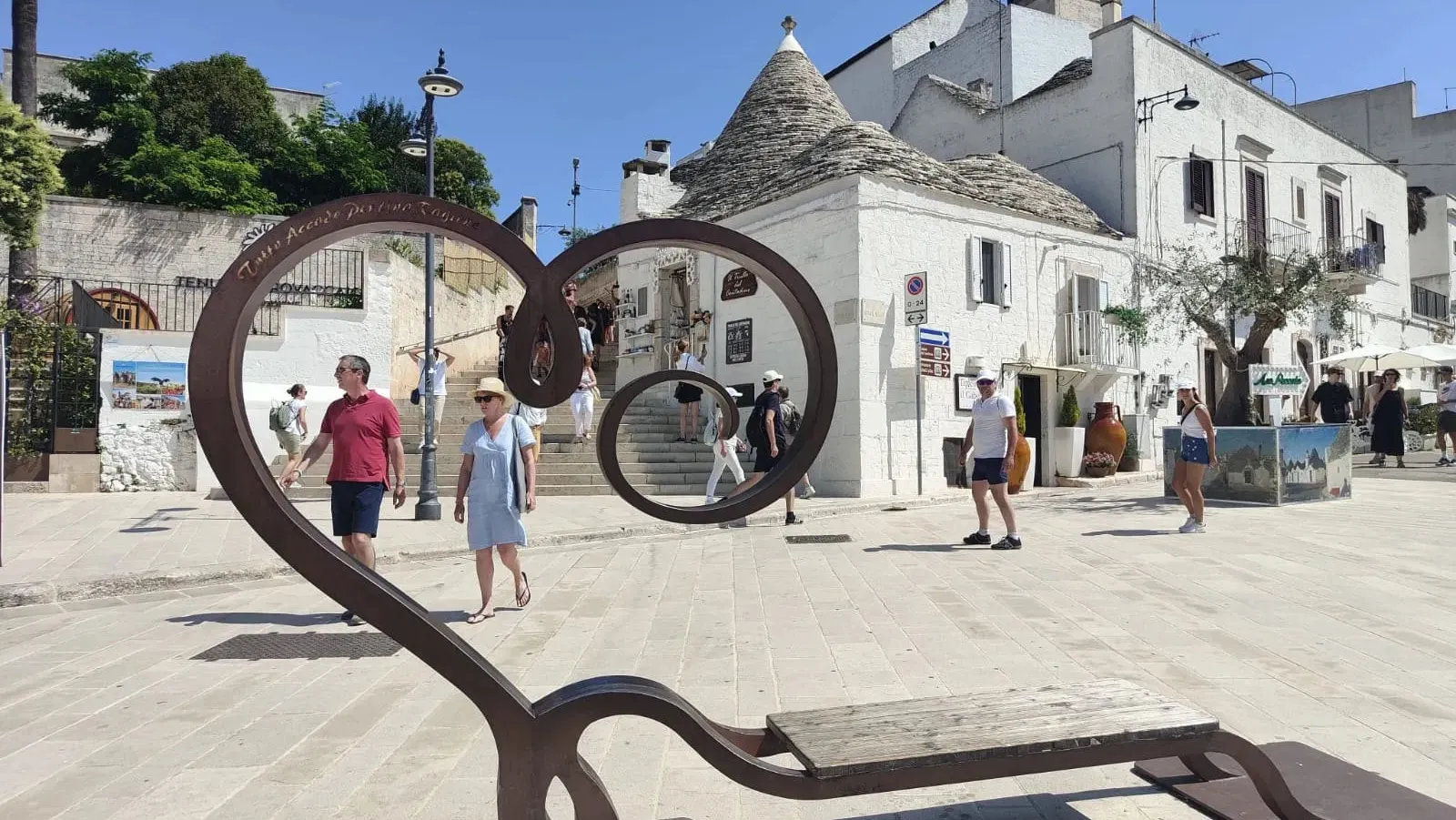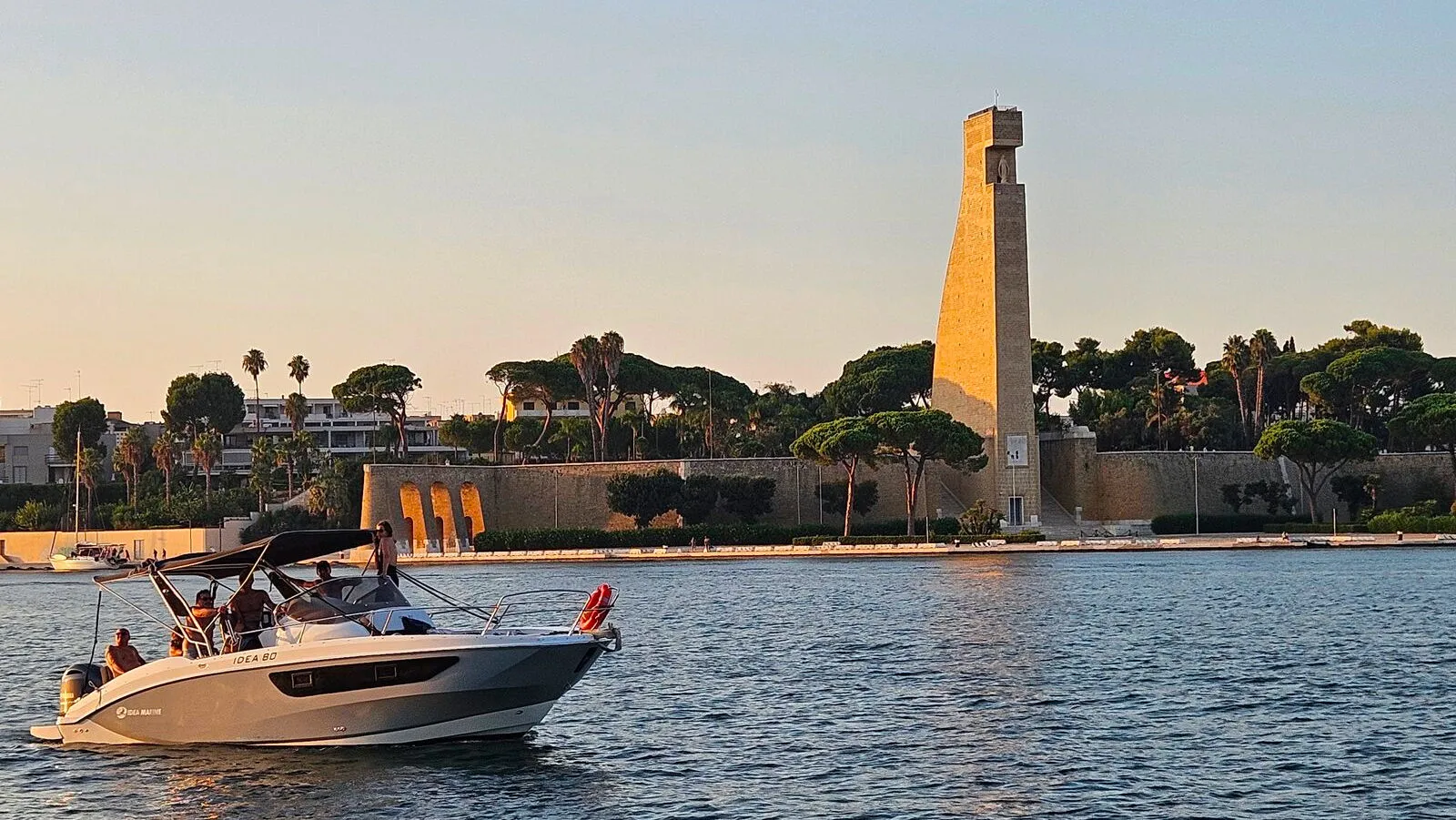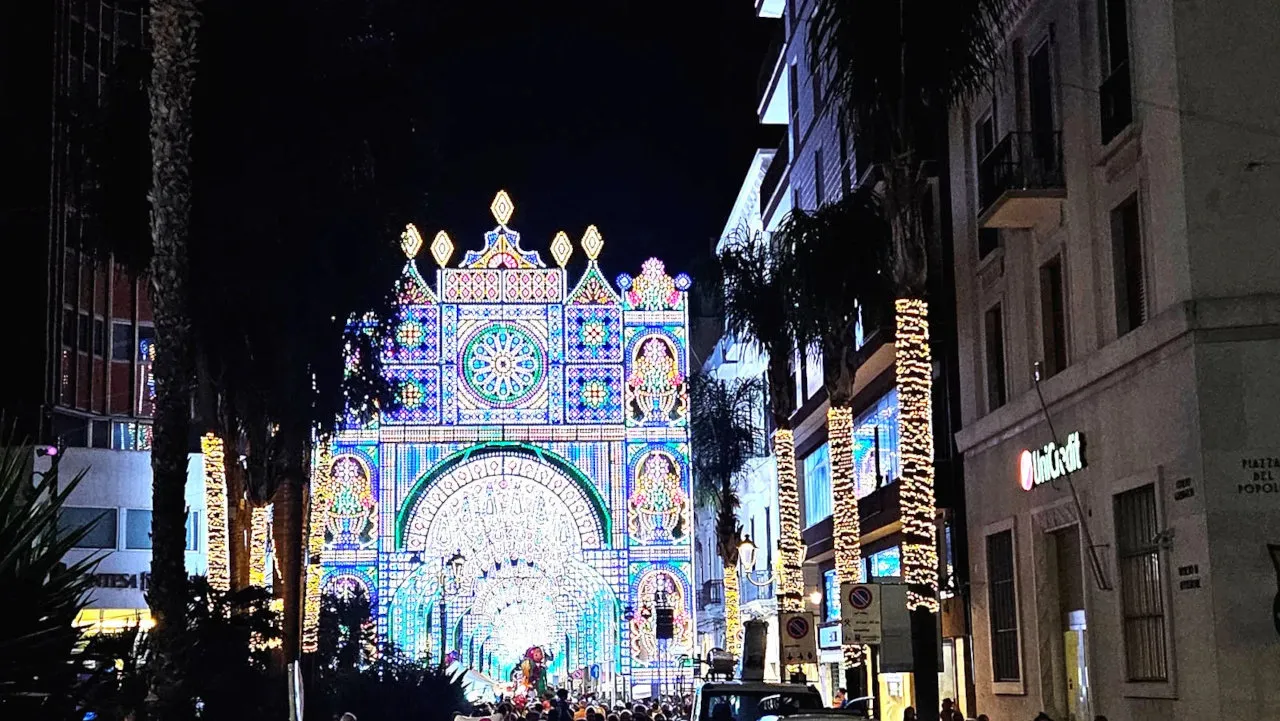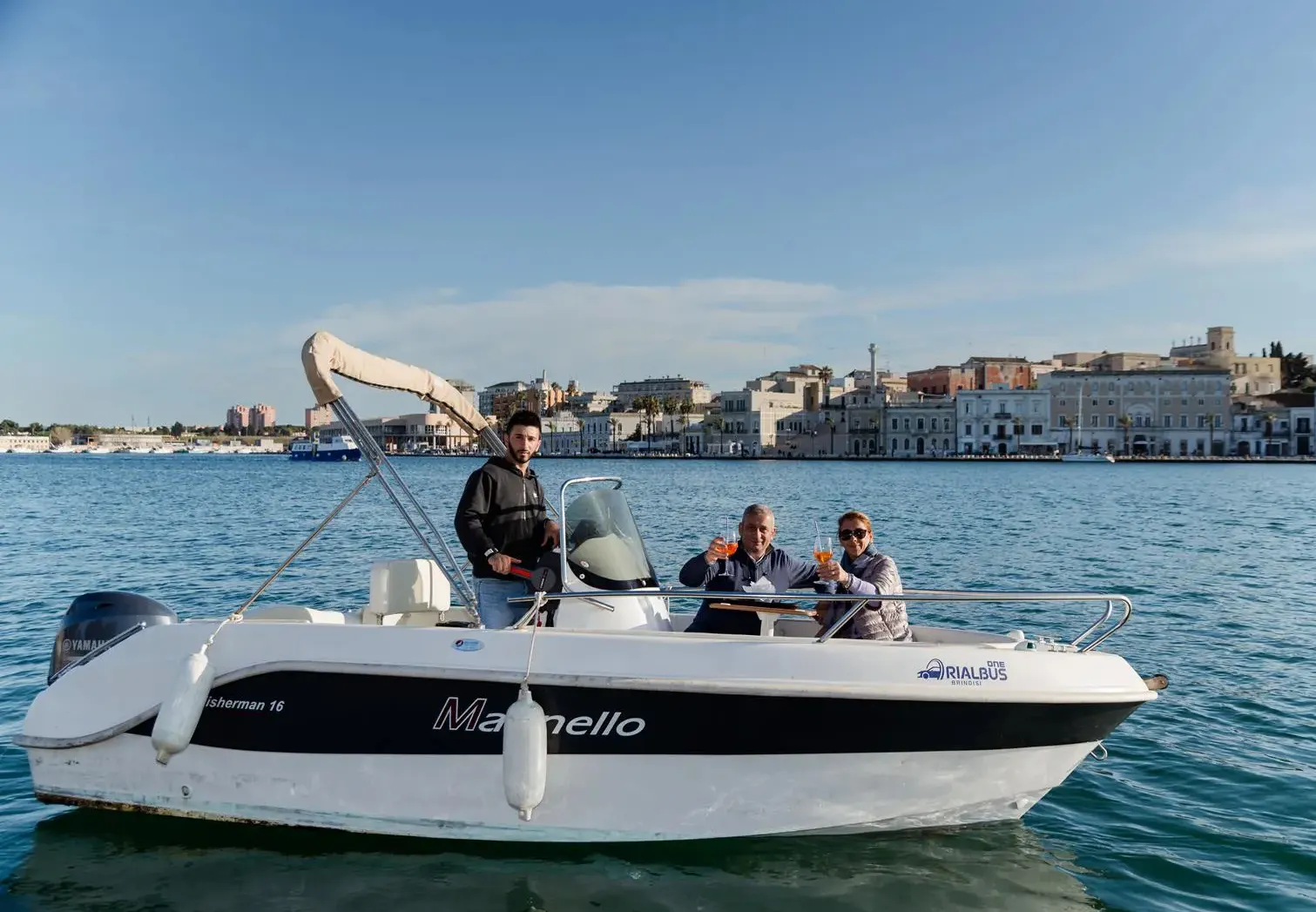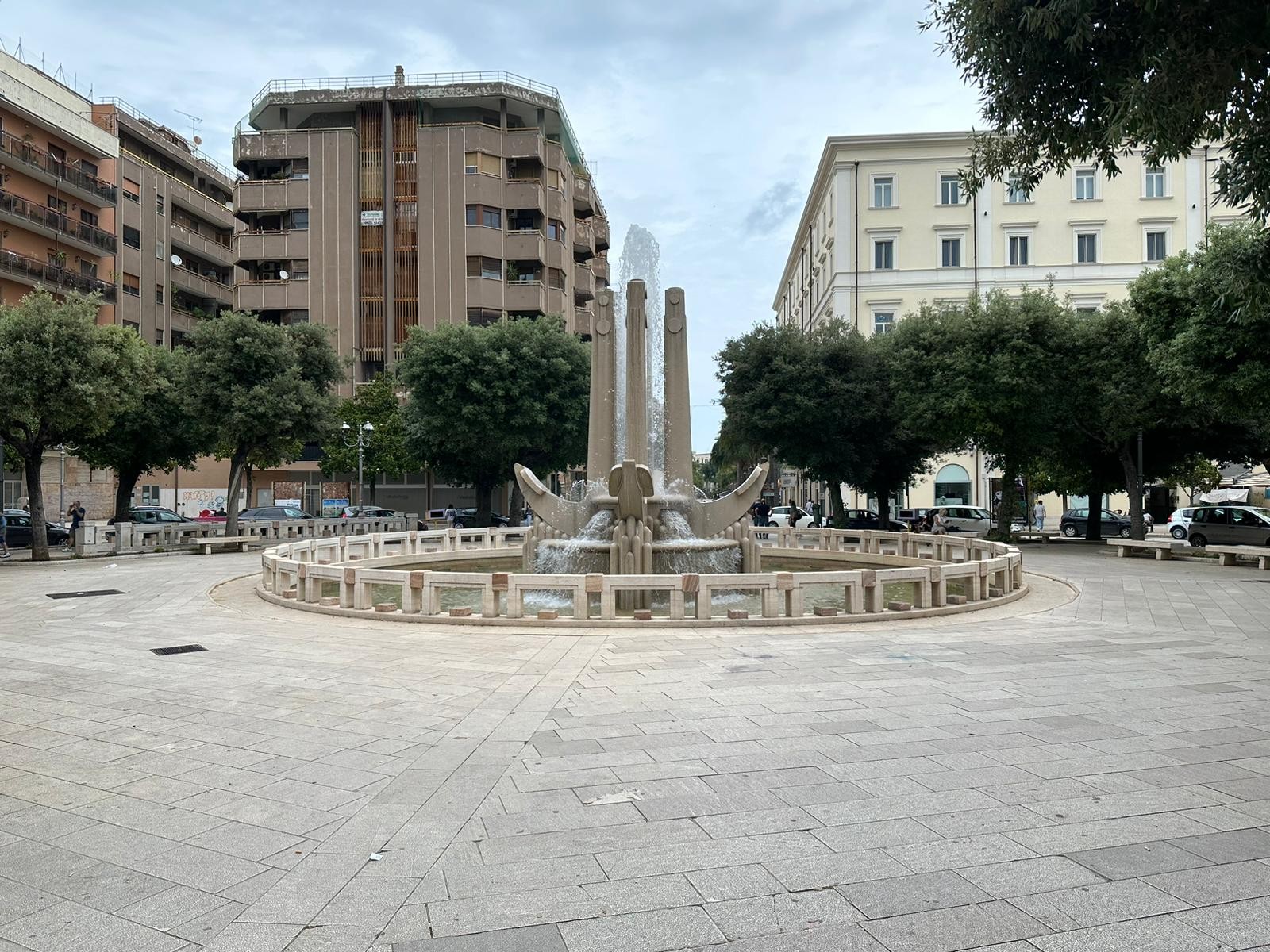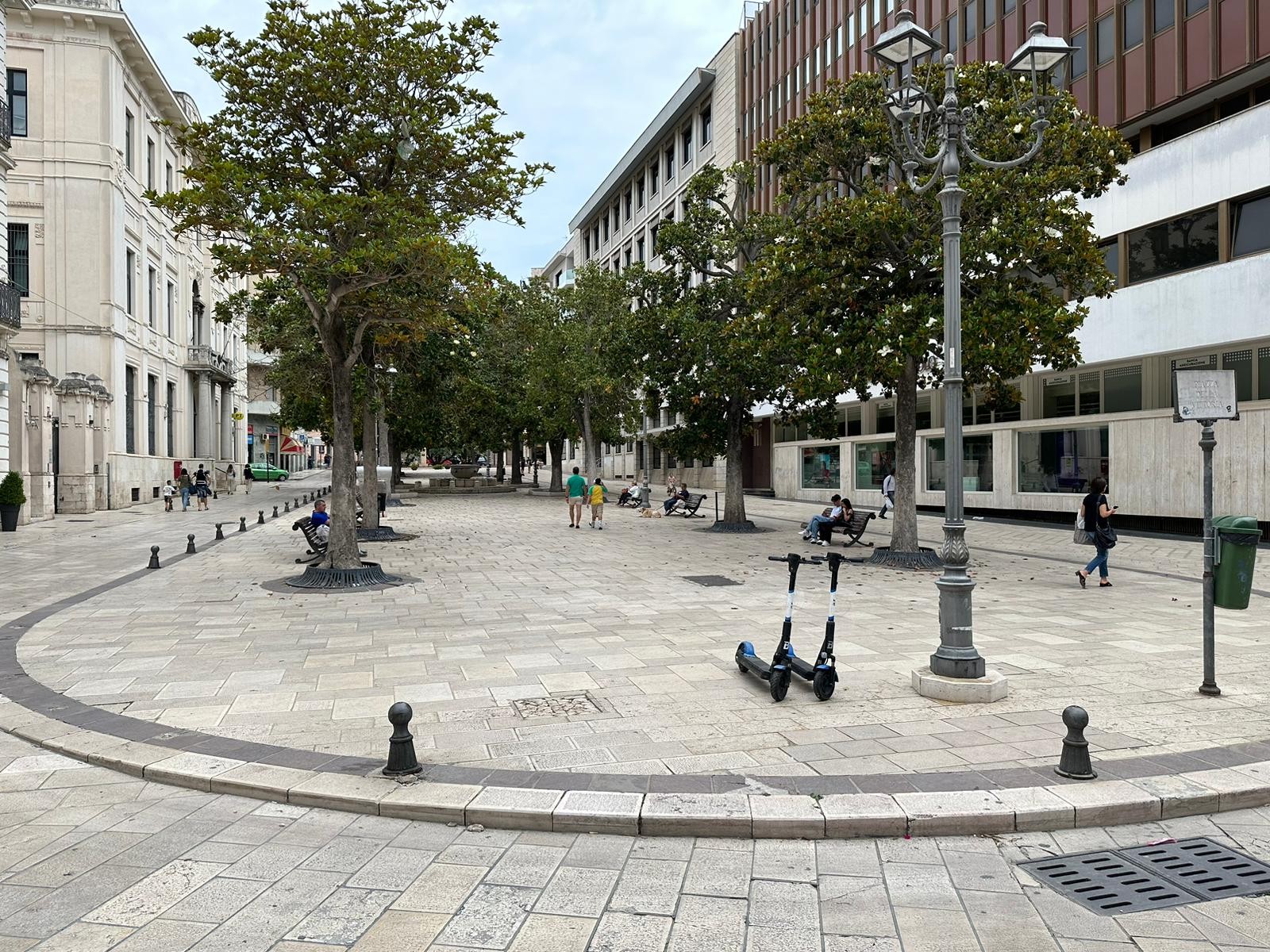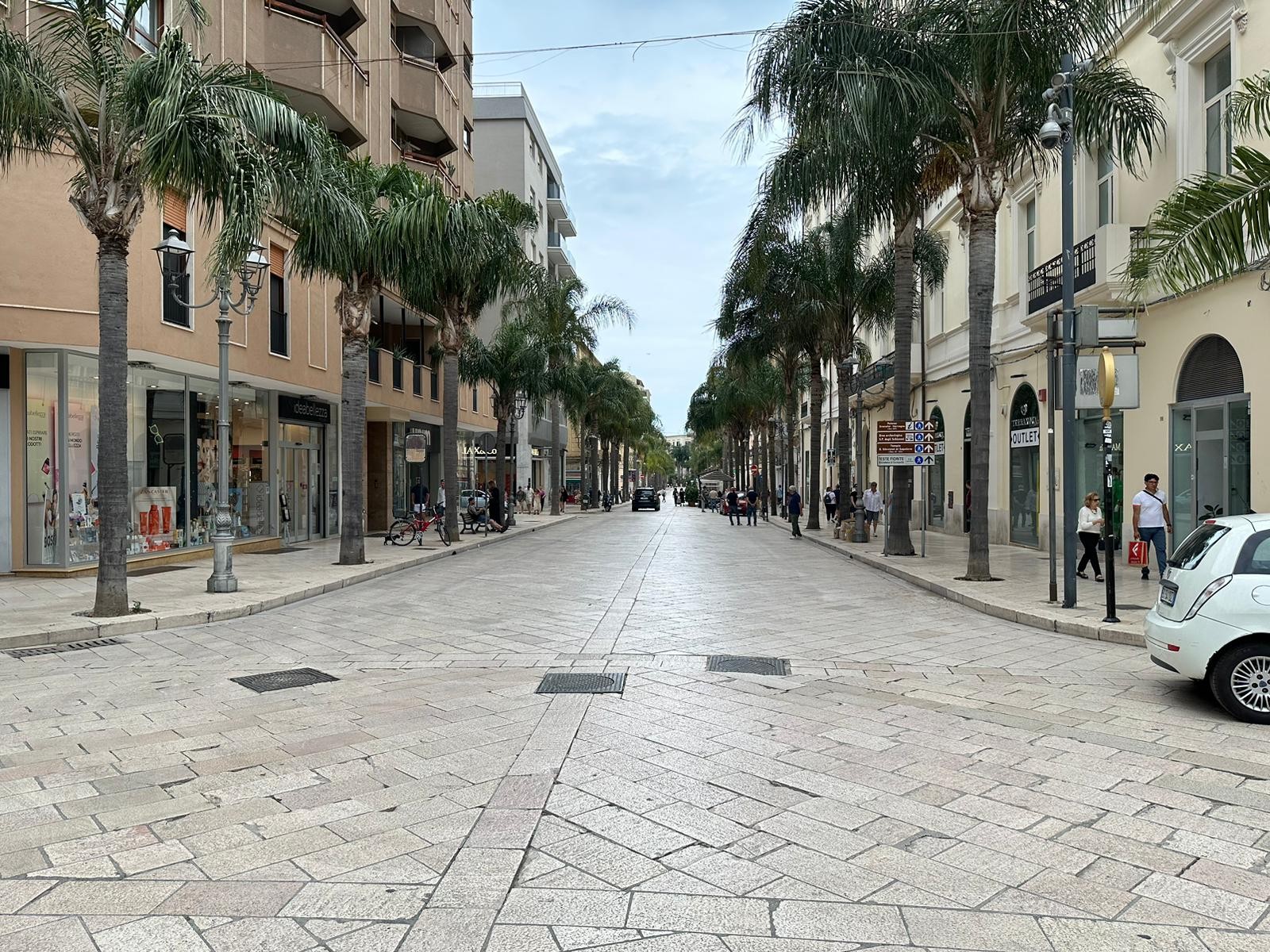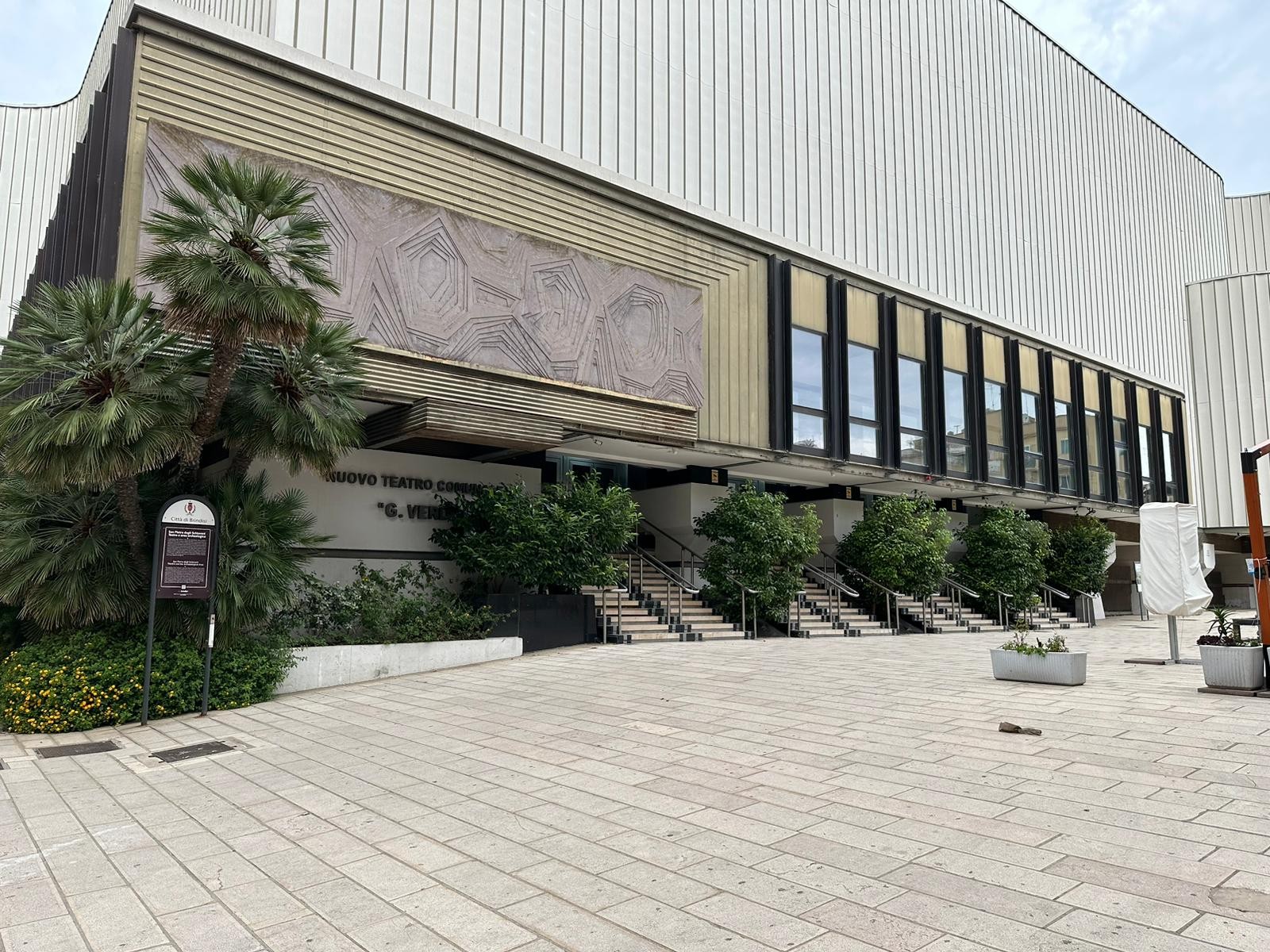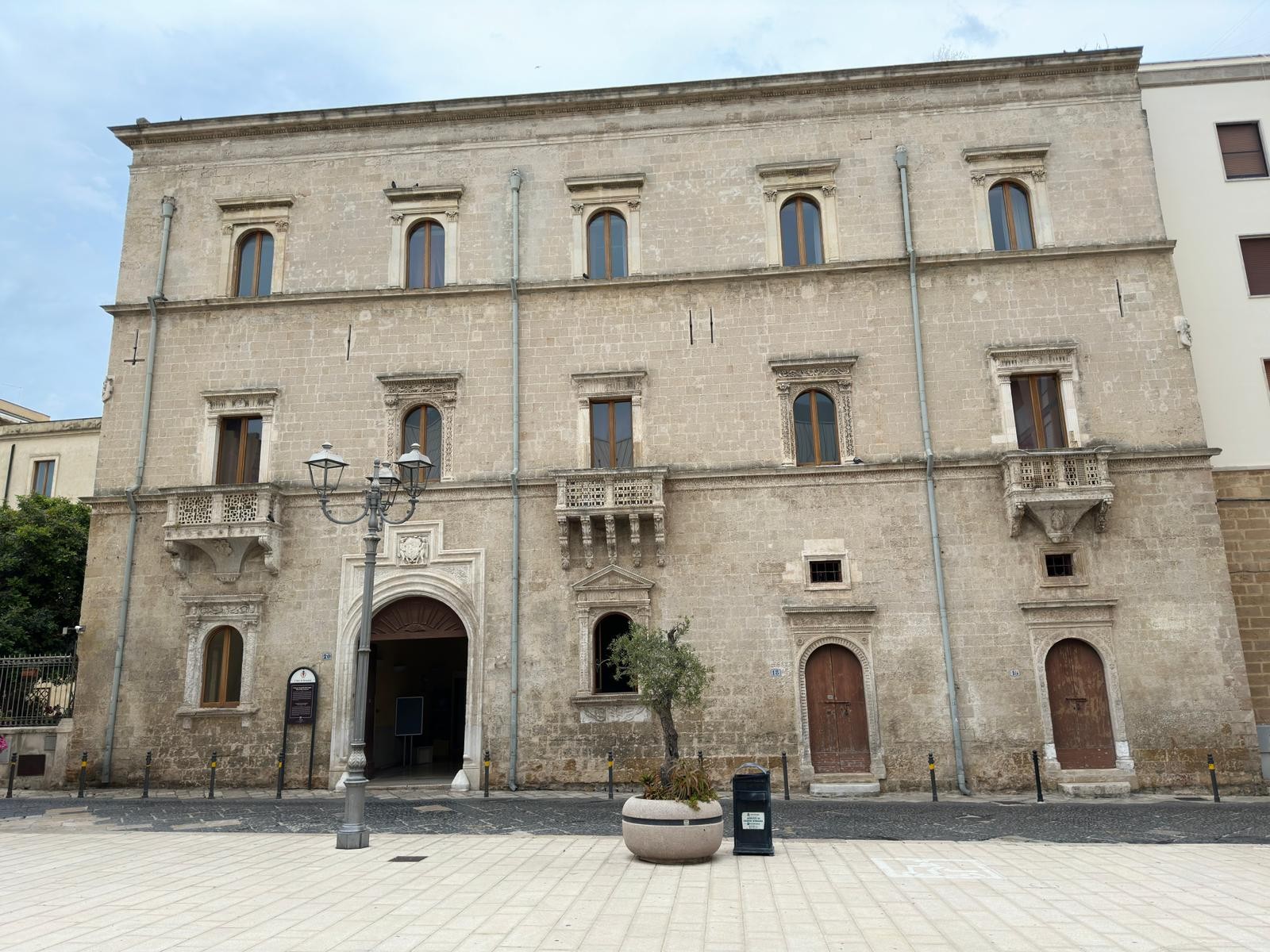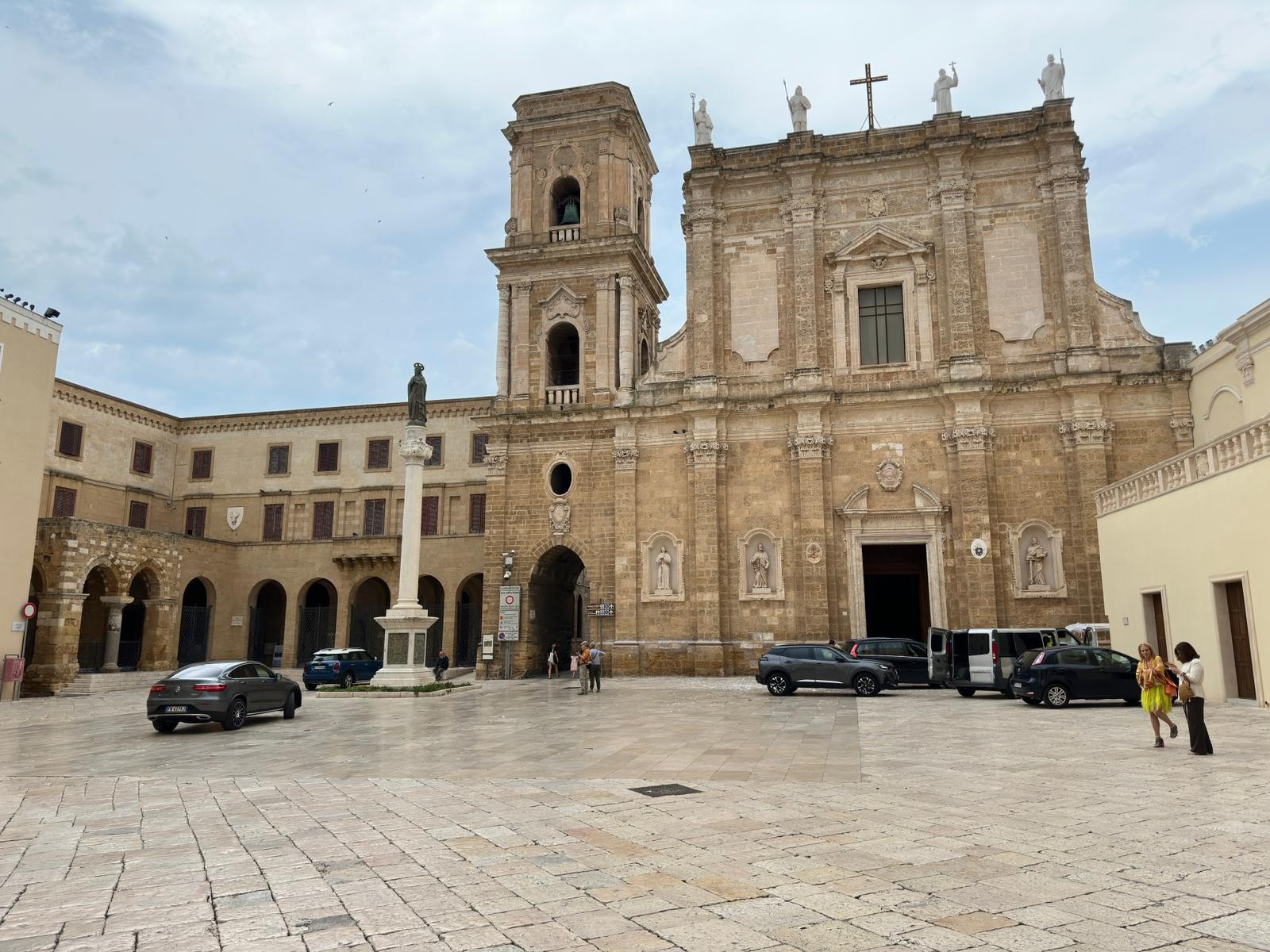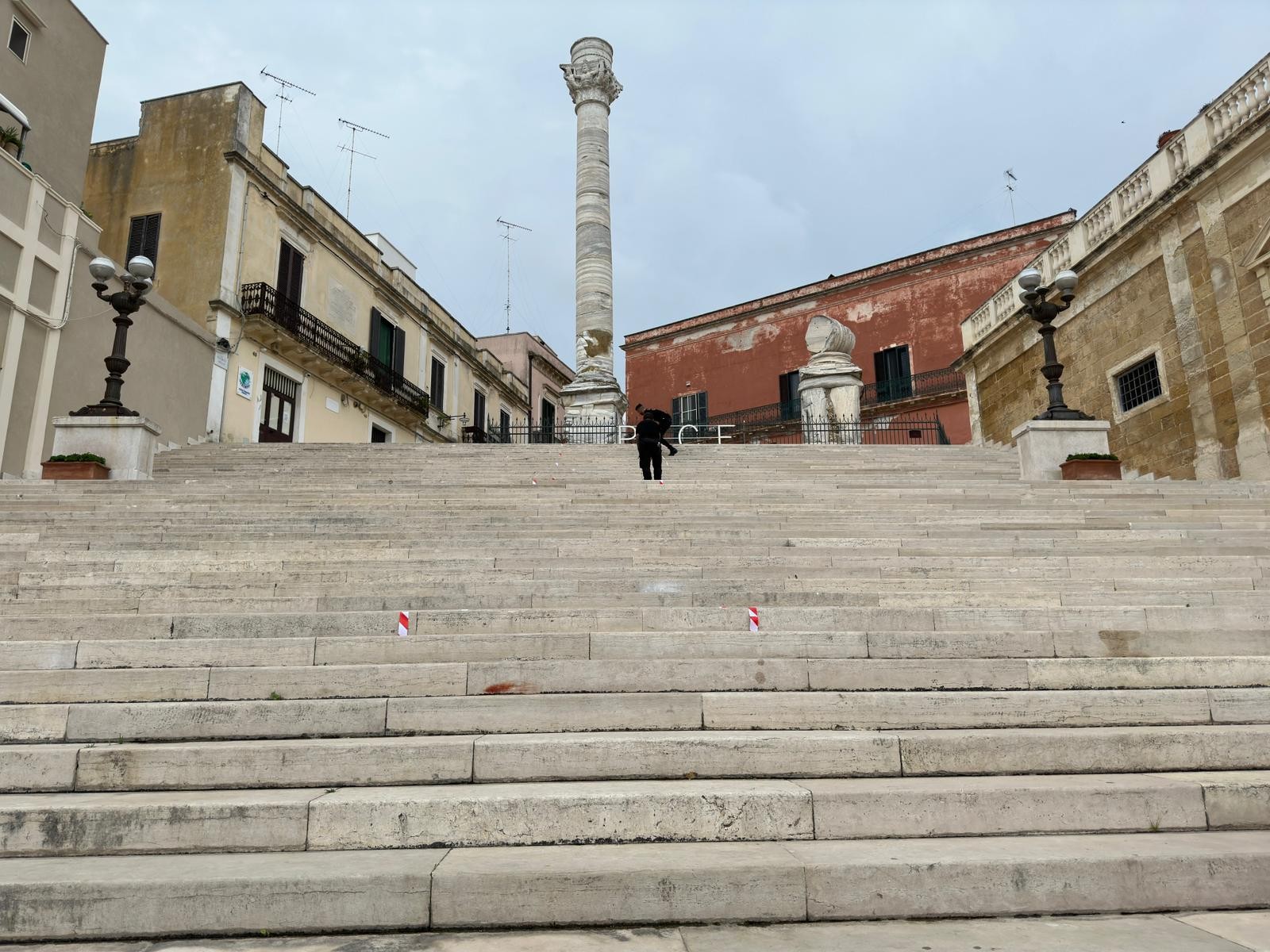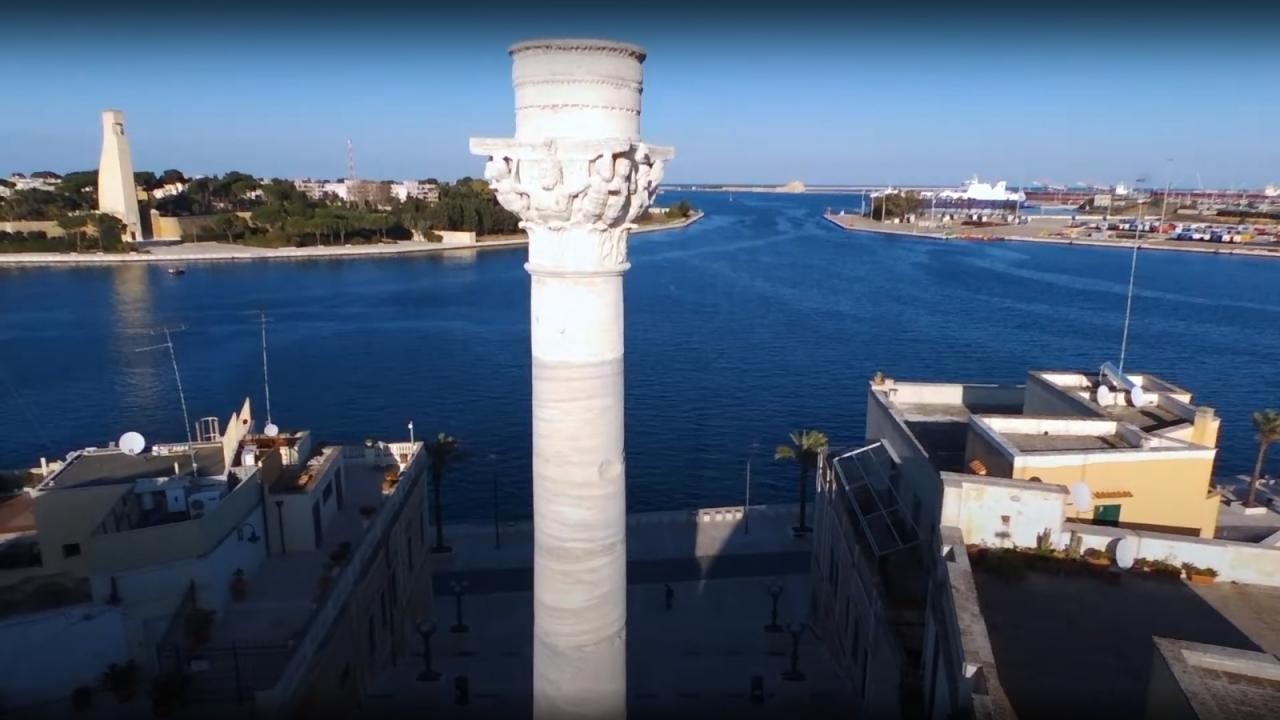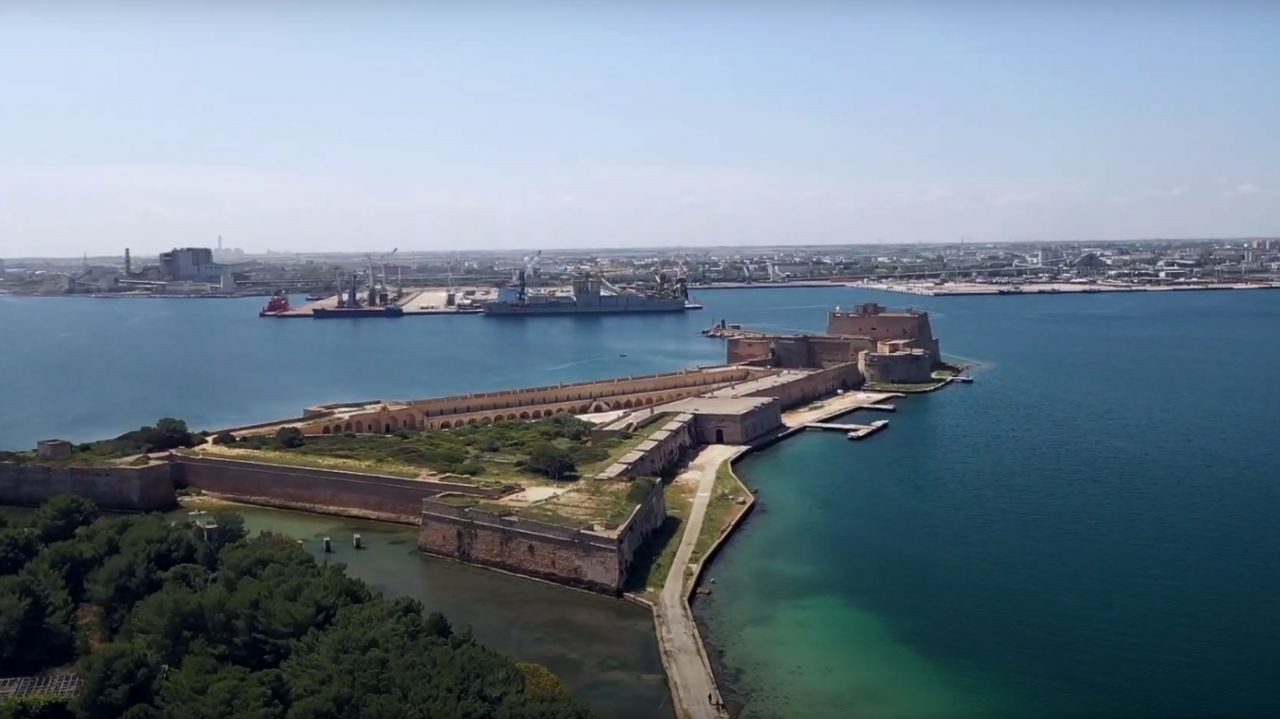The province of Brindisi is one of the favorite destinations for Italian and foreign tourists oriented to spend time by the sea. The coast of Brindisi is characterized by the crystal clear sea, the fine beaches, the wild coast and the breathtaking sunrises.
Being in Brindisi means enjoying splendid days by the sea, either on beautiful free beaches or in perfectly equipped beaches, immersed in nature or in the scenery of ancient villages and cities that have developed on the coast.
Brindisi a thousand-year-old city among the most populous cities of "Salento", the southernmost area of Puglia, and is known as the "Gateway to the East" for having been the nerve center for commercial and transit point for many travelers already before the Roman era. The historic center is built on the sea, along the port and its canals, and the rest of the city then develops towards the hinterland. Since Roman times it is still today a point of passage for different populations, a commercial crossroads, a crossing point from the sea to reach Puglia or to move inside Italy.
What allowed the development of the city in Roman times of Brundisium was the gigantic natural port in the shape of deer antlers, around which the city had an incredible development thanks to the infrastructures built to connect the peoples of the Mediterranean with Rome.
An example of a gigantic Roman infrastructure that connects Brindisi directly to Rome is the ancient Via Appia, a fast-flowing road built by the Romans of which some original road sections still survive today.
Some stretches of the Via Appia Antica have been preserved until today, together with its Milestones to mark the distance traveled by travelers, and can still be visited in the province of Brindisi.
Thanks to the intersection of cultures since ancient times, the city has been a ferment of ancient buildings, works of art, ancient buildings, and open-air wonders that you cannot miss during your walk.
What to do in Brindisi
€ 160
What to see in Brindisi
If you are on holiday in Puglia and you want to visit Brindisi, the best things to see are:
- Piazza Cairoli
- Piazza della Vittoria
- Corso Umberto
- New Verdi Theater
- Palazzo Granafei Nervegna
- Duomo
- Virgilian staircase
- Roman Columns
- Monument to the Sailor
- Alfonsino Castle
Piazza Cairoli
The square is in the historic center of Brindisi and a crossing point if you want to get to the port.
If you walk through the center along the Corso you will reach this fantastic square, characterized by the White marble Fountain of Anchors.
You will have a lot to see and do along the streets of the historic center. In the neighboring streets you will find many restaurants, bars, pastry shops, ice cream parlors and many other services with which to satisfy your needs.
Piazza Vittoria
One of the two main squares in the center of Brindisi is Piazza della Vittoria which crosses the two most important streets of the city.
The main feature of the square is the tree-lined avenue on both sides, under the shade of which benches are installed on which you can stop and cool off in summer.
The Fontana de Torres is installed on the square, named after the Spanish governor who ruled the city in 1600.
A sentence is inscribed on the fountain which exalts the restoration work of the Roman aqueduct to restore the pre-existing Roman aquifers, compared to the damage caused to the city aqueduct by the previous lord the Norman William I.
Corso Umberto
The square is in the historic center of Brindisi and a crossing point if you want to get to the port.
If you walk through the center along the Corso you will reach this fantastic square, characterized by the White marble Fountain of Anchors.
You will have a lot to see and do along the streets of the historic center. In the neighboring streets you will find many restaurants, bars, pastry shops, ice cream parlors and many other services with which to satisfy your needs.
New Giuseppe Verdi Theater
The New Giuseppe Verdi Theater, in the center of Brindisi, is characterized by having been built on and around a Roman excavation that is still perfectly preserved and open to the public, the Archaeological Area of San Pietro degli Schiavoni.
It was designed in the seventies but completed and inaugurated in 2006 with a great classical music concert open to the city public and directed by the great master Riccardo Muti.
Palazzo Granafei Nervegna
A few steps from the theater you can visit Palazzo Granafei Nervegna, which houses numerous Roman finds but above all the original capital of the ancient Roman columns positioned at the entrance to the port.
The palace was allegedly owned by the Granafei family, who fled Constantinople during the destruction of the city by Mohammed's Turks.
The Granafei moved first to Oria and then in 1508 to Brindisi thanks to the incentives provided by Ferdinanto of Aragon to those who had moved to the city of Brindisi to allow its repopulation.
In the 17th century the palace passed into the hands of the Nervegna, after the Granafei moved to the nearby town of Mesagne.
Cathedral of Brindisi
The Cathedral is the nerve center of the religious life of the city, rich in refined works of art and with mosaics on the floors of the medieval era.
The churchyard of the Cathedral is the starting point of various events, patronal festivals and festivals such as the traditional Feast of San Teodoro, the patron saint of the city of Brindisi, held on the Friday of the first Sunday of September in honor of the city's patron saints, Teodoro and Lorenzo.
Virgilian Stairs
In Viale Regina Margherita, in the center of Brindisi, you can admire the Virgilian Staircase, whose name draws on the place where the home of the great poet Publio Virgilio Marone was built, where he died in 19 AC
At the top of the staircase is Piazzetta Colonne, a place where the remains of Roman columns are kept, considered the end point of Via Appia Antica and the culmination of an ancient monumental area from the Roman era.
The area is surrounded by magnificent palaces whose constructions are a crossroads of styles that have alternated over time, which blend the sacred and the profane, allowing us to see unique buildings in the area.
Roman Columns
The Roman Columns of Brindisi are a monument located in the port of the city a stone's throw from the tourist port, at the top of a marble staircase that starts from the tourist pier.
Originally they were two twin columns and in the 14th century they were represented in the emblem of the city.
The columns were originally twins but following a collapse in 1528 the monument was left mutilated.
The column that remained intact was dismantled during the Second World War to avoid further damage.
It was later restored and placed on the staircase with a copy of the capital.
In front of the staircase you can admire the tourist port, formed by two inlets that embrace the historic center, known as bosom of the east and bosom of the west.
Monument to the Italian Sailor
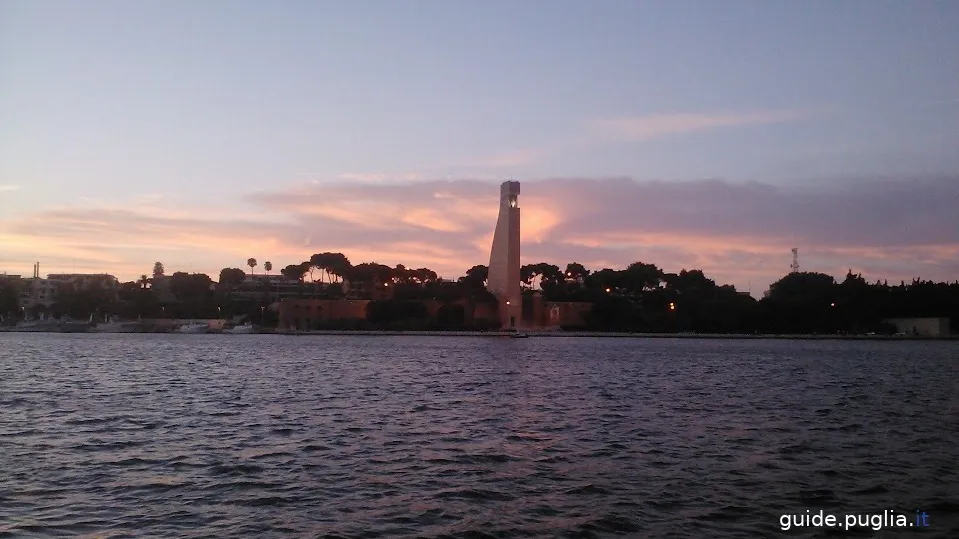
Another symbol of the city of Brindisi is the Monument to the Sailor of Italy, a rudder-shaped structure 53 meters high.
The monument was built to commemorate all the sailors who fell during the First World War and is visible from every point along the coast.
It can be reached quickly from the center through the use of the sea transport service in the internal waters of the Port, or by reaching the other side of the inlet in a few minutes with a vehicle.
Once you reach the monument, you can go up and admire the wonderful view of the city of Brindisi from above.
Alfonsino Castle
At the entrance to the external port of Brindisi you will find the Castello Alfonsino, a building fortified town built on the Island of Sant'Andrea to defend the city.
Not far from the castle you will find the "Forte a Mare" or Forte di Brindisi, another huge structure whose construction lasted 46 years starting from 1558 under Philip II of Habsburg.
Castello Alfonsino is also called Castello Rosso due to the vermilion color of the stone used to build it.
What to do nearby
What to see in the province of Brindisi
The whole province of Brindisi is full of perfectly preserved ancient towns, distributed both on the coast and in the internal territories.
Traveling and discovering some of the towns near Brindisi will allow you to admire unique landscapes during the journey and be able to spend pleasant and unforgettable moments during your stay among culture, good food and hospitable people.
The most beautiful places to see on the coast in the province of Brindisi are:
Ostuni, the white city
Not far from Brindisi you will find Ostuni, easily reachable by public transport or vehicles, known as the White City for the characteristic color of the stones used in its constructions and for the color of the white lime-based plasters.
This feature has been present since the Middle Ages, as not only was it an easily available material, but the white color gave the alleys greater brightness, given by direct and reflected light.
If you have the opportunity to spend a relaxing day by the sea on one of the most beautiful beaches of Ostuni, you can easily distinguish the silhouette of the town from the coast for its characteristic white color.
Ostuni is perched on a hill overlooking the plain below, with a view that extends to the sea through olive groves and fields of various kinds.
The historic center of Ostuni is perfectly preserved and full of services that will make your stay or stay in the city extremely pleasant.
Walking through the village, you will be fascinated by the small streets full of clubs, shops and craft shops.
Ostuni also offers the possibility to book tours in Calessino, the typical 3-wheeled scooter, which allows you to be transported as passengers to be able to quickly admire all the most beautiful corners of the village.
Ostuni offers a coast with beautiful natural beaches easily reachable in no time by any means.
You can choose from some of the most beautiful beaches of the Brindisi coast among those that most attract you, starting with those that stand out among them for their naturalness and beauty, namely the natural reserve of Torre Guaceto and the unspoiled oasis of Torre Pozzella.
Fasano
Fasano is a town, about 50 km north of the province of Brindisi, where historically the economy has been mainly based on agriculture.
Its pretty historic center is made up of narrow streets, typical of the ancient Apulian towns, which by preventing the sun from beating down, guarantee the citizens the coolness during most of the day (even in the hottest periods ). in which the light of the white lime of the buildings stands out.
The territory of the municipality of Fasano occupies a part of the Itria Valley and extends to the sea, occupying 15 km of the Adriatic coast.
Fasano offers many monuments and places of interest to the curious visitor, all perfectly preserved and preserved.
If you are in Fasano you cannot absolutely miss a visit to the Old Town, where you can admire the ancient structures, the Remembrance Park and the Torrione delle Fogge.
Within the city territory of Fasano there are numerous churches each dedicated to one of the patron saints of the activities and peasant tradition of the city. In each of these churches it is possible to discover perfectly preserved works of art and jewels of the ancient Apulian art.
Churches in Fasano
There are many churches open to the public that you can visit in Fasano, all rich in works of art from different eras that you can visit: Church of Santa Maria della Grazia, Mother Church of San Giovanni Battista, Church of the Purgative Souls, Church of Sant'Antonio Abate, Church of San Nicola, Church of San Francesco da Paola in Fasano, Church of Maria Santissima del Rosario, Church of San Giuseppe, Church of Santa Maria Assunta, Church of San Francesco of Assisi, Church of the Sacred Heart of Jesus in Torre Canne, Church of San Francesco da Paola in Savelletri, Church of Santa Maria della Salette, Church of the Madonna del Carmelo and Trullo del Signore in Selva di Fasano.
Fasanolandia
A place and, at the same time, an interesting project in Fasano is the Zoosafari of Fasano and Fasanolandia, a tourist complex which includes a zoological garden and an amusement park with an area that extends for thirty hectares and accommodates about 3000 animals of 200 different species, which can be observed along a specially organized path.
Selva di Fasano
At Selva di Fasano, a fraction of Fasano 5 km from the center which is also the highest point 420 meters above the sea level, you will find a luxuriant natural Mediterranean flora consisting of forests of oaks, holm oaks, pines, cypresses and cedars
The forest is thinning out continuing towards the hinterland where it is gradually replaced by fruit trees, in particular cherry trees, pears, walnuts, hazelnuts and chestnuts.
Selva di Fasano is characterized by the presence of Trulli, overlooking the territory of Alberobello, and caves that allow visitors to enjoy numerous panoramic views and the quiet that it offers while strolling through the tree-lined avenues
Minaret
The Minaret is a construction built in 1918 to be used as a dwelling, built following all the canons for the construction of a Muslim building from whose balcony you would normally listen to Arab religious songs.
The Minaret was built using labor and materials from Tunisia, thus following the original canons of the Arab construction of religious buildings.
Dolmen of Montalbano
The Dolmen of Montalbano, also known as the "Table of the Paladins" represents one of the first funeral testimonies in the Brindisi area.
It is located in the "Occhio Piccolo" area on the S16 Fasano-Ustuni. It dates back to the Bronze Age (about 2000 BC) but still manages to survive the bad weather and vandalism that unfortunately has recently suffered.
Archaeological Park of Egnazia
Gnazia for the Messapians, or Egnatia for the Romans, is the ancient name of Egnazia or a ancient Messapian center rich in ceramic manufactures and for this reason, today , one of the most interesting archaeological sites in Puglia.
What remains of the ancient and luxuriant city of Egnazia is located in the province of Brindisi on the border with the territory of Bari.
The first excavations were carried out in 1912 and, in 1978, all the artifacts found were then exhibited in the Archaeological Museum of Egnazia, built if necessary in 1978.
Rock Settlements near Brindisi
Due to the abandonment of Egnatia, following the many invasions first and the fall of the Roman Empire then, the population of the city and surrounding territories moved inland for safety and occupied limestone caves.
Real villages in the white tuff were dug, complete with houses, animal shelters, places dedicated to work in the fields and crypts, some of which decorated with Byzantine frescoes.
The Masserie in Brindisi and its province
The Masserie are a historical feature of the whole of southern Italy and therefore also of the Apulian territory.
Even in the province of Brindis, as in most of agricultural Puglia, the farms represented the control point of the large landed property that fed the aristocracy and bourgeoisie of the past.
The Masseria was practically a large farm, inhabited by farmers and sometimes even by the landowners themselves, which also included spaces reserved for stables or warehouses. The Masserie were born over pre-existing rural settlements and fortified themselves becoming real autonomous places of life.
Many of the farms that were later abandoned over the centuries, following the migration of farmers to the cities, have been redeveloped and brought back to life.
The countryside of Fasano, like all those in the province of Brindisi, are full of Masserie that you can visit and where you can relax and where you can possibly stay, given that some of these have now become real catering activities, accommodation or wellness centers.
Each Masseria is unique in its kind but it is possible to divide them into five types, all easily distinguishable:
- the Torre-masseria
- the farmhouse with tower
- the fortified farmhouse without a tower
- the castle castle
- the farm without fortifications.
One of the common characteristics of the Masserie in Fasano is the presence of an oil mill entirely dug into the rock (the hypogeum-type mill-trappeto). Another characteristic of the Masserie, even if less common, is the presence of small churches, real jewels of the art of the time that contain ancient jewels, decorations, frescoes, paintings and ancient relics.
Among the most beautiful and historically important farms in the province of Brindisi to visit there are:
- Masseria "Narducci"
- Masseria "San Domenico"
- Masseria "Maccarone"
- Masseria Sant'Angelo de 'Grecis (known as the Abbey of San Lorenzo)
- Masseria "Marzalossa"
During your travels between the farms in the province of Brindisi you will be able to meet numerous wineries or farms . These companies produce wine and other food products, using the genuine products of their land and still working them today with traditional methods. turning them into one-of-a-kind delicacies.
Some of these companies offer hospitality with all the comforts necessary to ensure a perfect stay for guests, with food and wine tours where you can taste their products or wellness centers where you can relax and recharge.

